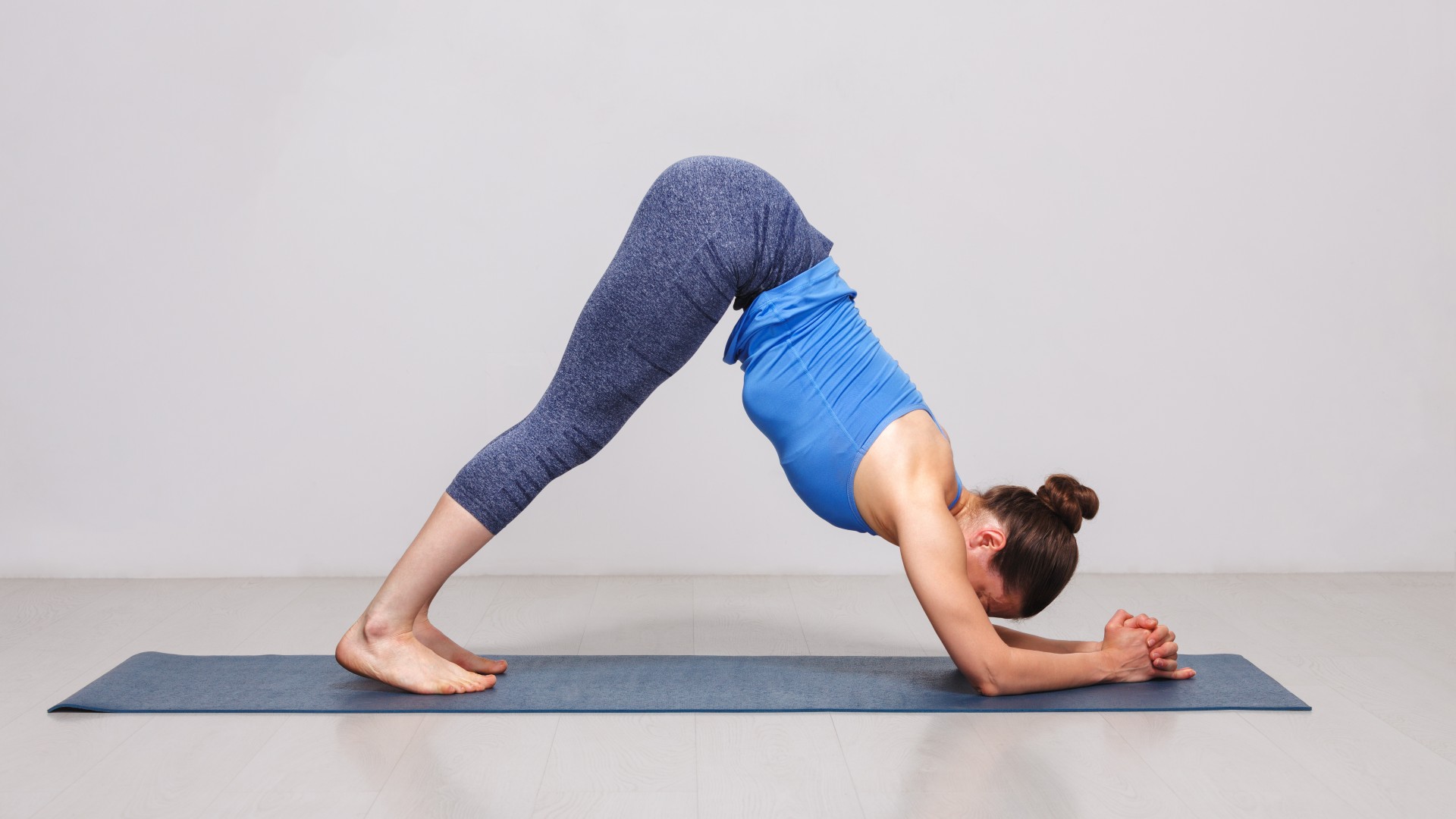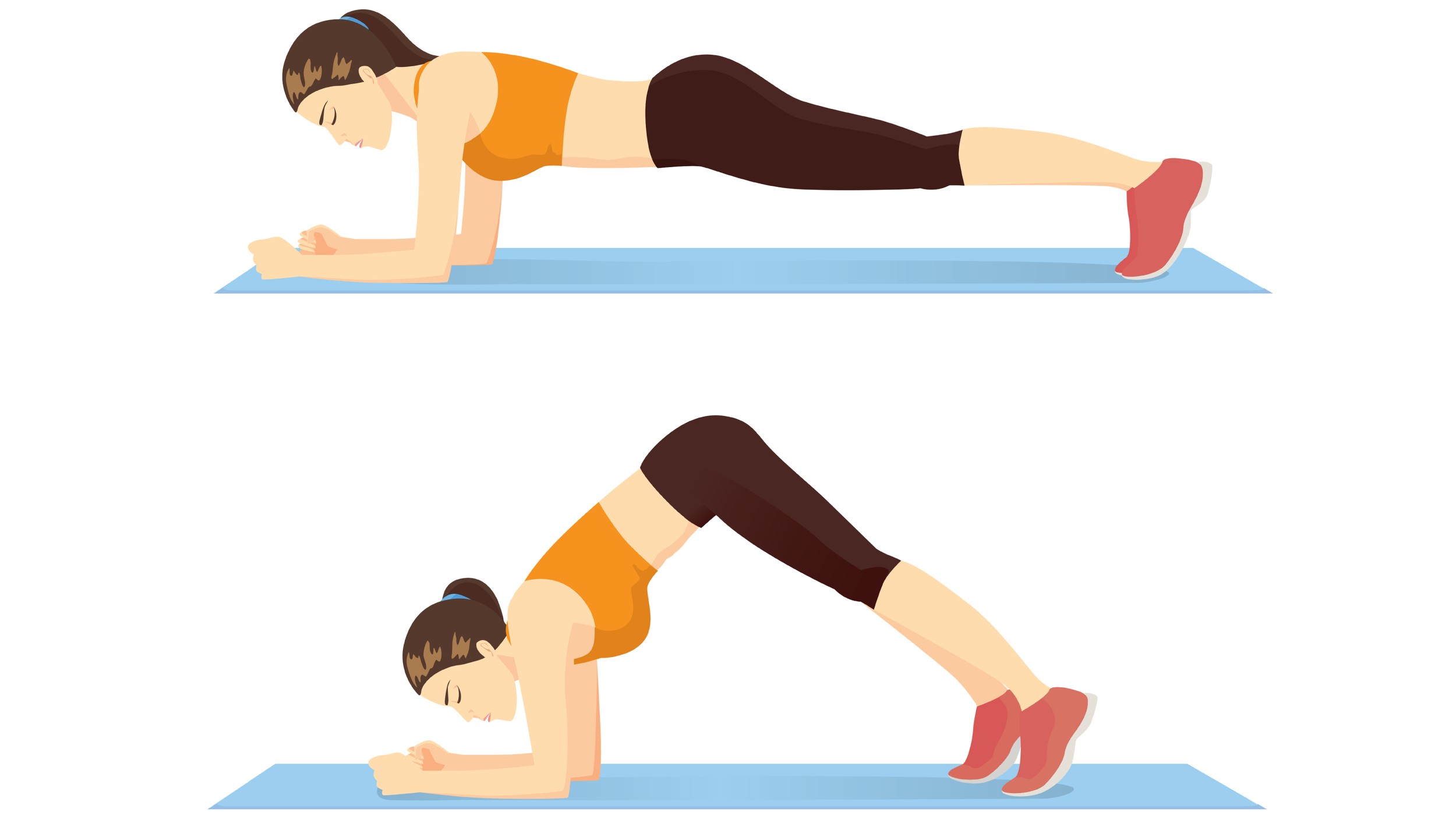
Known as the yoga asana dolphin pose, the plank variation is primarily a shoulder and ab exercise. And like the yoga pose, the dolphin plank emphasizes your arms, shoulders, chest and core and stretches your lower back, hamstrings and calves.
If you’d like to strengthen your arms, shoulders and core muscles — the dolphin plank is a plank variation worth your time. But if you have an existing shoulder injury, check with a relevant medical professional before giving this a go.
Below, we cover how to do dolphin planks with proper form and the most common mistakes you might experience when you try them. We also discuss the benefits of dolphin planks and why the abs exercise is effective for strengthening your shoulders and arms. Grab one of the best yoga mats and read on.
Dolphin planks: The benefits
Like most planks, the dolphin plank torches your arms, shoulders, chest, back, hips, core and leg muscles. Unlike a regular plank, you’ll send your hips backward and press through your elbows, taking weight off your legs.
In yoga, you can transition from a dolphin pose to a headstand by walking your feet towards you. By lifting your hips, you’ll shift the weight towards your upper body and over your shoulders, similar to a pike push-up but with your elbows pressed down instead. Doing so stretches the backs of the legs and tests core and shoulder strength.
You could choose to hold the position or transition between dolphin plank and forearm plank for sets and reps using a mixture of isometric vs isotonic contraction, meaning your muscles stay under tension without moving (isometric) and while lengthening and shortening (isotonic).
You can learn more about the plank exercise in general and the muscles worked here.
Sign up to get the BEST of Tom's Guide direct to your inbox.
Get instant access to breaking news, the hottest reviews, great deals and helpful tips.
Dolphin planks: How to do them

If you have tight hamstrings, softly bend your knees to relieve the tension down the backs of your legs. Avoid rounding your back and keep your spine long.
How:
- Start in a forearm plank position and engage your stomach, glutes, quads and shoulders
- Push your hips back and upward and rest your weight between the balls of your feet, drawing your heels toward the mat
- Keep your forearms pressed into the mat and squeeze your shoulders, then clasp your hands together behind your head
- If you prefer, rest the top of your head on the mat between your elbows
- To make the move harder, lift your head away from the floor and keep the pelvis tucked slightly under.
Dolphin planks: 3 common mistakes
At Tom’s Guide, we challenge ourselves to test as many planks as possible for our best plank variations guide (some more torturous than others); this is one of the best ab and shoulder muscle torchers we enjoy most, but it’s also easy to get wrong. Here are some common mistakes.
Too much pressure on the upper body
During the exercise, your arms shouldn’t bear too much weight. Try to send your hips upward and back to balance the weight between your head and feet. We see many people rest their heads on the mat, which is fine if you can keep your neck neutral, but try to lift your head if you can.
Holding your breath
Holding your breath during any exercise could raise blood pressure, so remember to breathe. Send your breath toward your diaphragm and practice expanding your stomach rather than breathing with your chest. Inhale and exhale with control.
Check your positioning
If you choose the active dolphin — moving between forearm plank and dolphin — keep your pelvis tucked under and lower your hips toward the floor as you push your shoulders forward over your elbows. Keep your back straight, then push your hips backward again as you distribute the weight between your hands and feet.
Dolphin planks: 3 variations to try
Active dolphin
As we mentioned, you could try active dolphin; the ab variation is killer on the shoulders and adds gentle movement to the plank exercise, helping to stretch and strengthen your hips and legs.
Lift one leg
To progress the exercise, lift one leg away from the floor behind you and practice the tripod balance position.
Walk your feet closer to your elbows
To deepen the stretch in your legs and increase demand on your core and shoulder muscles, try walking both feet closer toward your elbows and lifting your hips higher.
More from Tom's Guide

Sam Hopes is a level 3 qualified trainer, level 2 reiki practitioner and senior fitness writer at Tom's Guide. She is also currently undertaking her Yoga For Athletes training course. Sam has written for various fitness brands and websites over the years and has experience across brands at Future such as Live Science, Fit&Well, Coach, and T3.
Having worked with fitness studios like F45 and Virgin Active, Sam now primarily teaches outdoor bootcamps, bodyweight, calisthenics and kettlebells. She also coaches mobility and stretching-focused classes several times a week and believes that true strength comes from a holistic approach to training your body.
Sam has completed two mixed doubles Hyrox competitions in London and the Netherlands and finished her first doubles attempt in 1:11.
